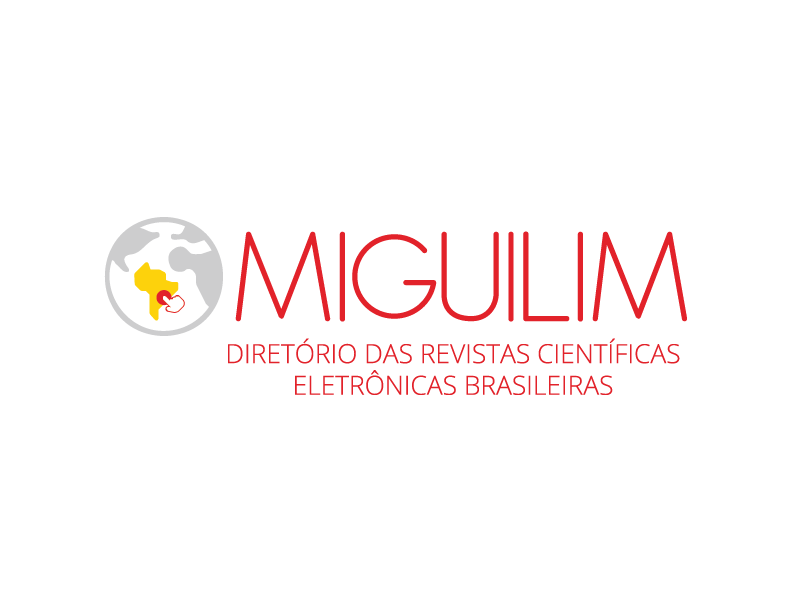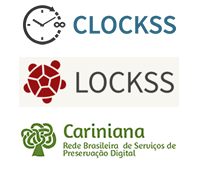The teaching of literature in the training reader of students with visual disabilities in the early Years
DOI:
https://doi.org/10.70860/ufnt.rbec.19441Keywords:
ensino da literatura, deficiente visual, formação do leitorAbstract
ABSTRACT. This article shows the importance of teaching literature in training readers with visual impairments (VI) with the support of materials adapted from low-cost Assistive Technology (AT). The study focuses on the initial years, as the teaching of reading and writing involving literature with images with embossed textures becomes more pleasurable for the student, but for the Specialized Educational Assistance (SEA) teacher, the adaptation becomes if a challenge. In this context, the main objective of this work is to produce a book adapted from the poem “The house and its owner", José (1987), contributing to the formation of literary readers in students with blindness or low vision in their development and learning. The work is structured qualitatively in a bibliographical review, for this we resort to theoretical discussions that lead to the description and understanding of the research corpus. The discursive analysis of the data shows the importance and procedures with photos and audio description of the adapted book product in Braille and the images in relief/texture customized with low-cost Assistive Technology of the poem “The house and its owner”, José (1987).
Downloads
References
Amorim, M. Á., Domingues, D., Klayn, D. V., & Silva, T. C. (2022). Literatura na escola. São Paulo: Contexto.
Bersch, R. (2007). Tecnologia Assistiva. Porto Alegre: RS. Recuperado de: https://www.assistiva.com.br/Introducao_Tecnologia_Assistiva.pdf
Bissoli, L. M. S. (2006). Leitura de imagens: as concepções dos professores de educação infantil. (Dissertação de mestrado em Educação, núcleo temático de Alfabetização, apresentada ao Instituto de Biociências do Campus de Rio Claro, Universidade Estadual Paulista “Júlio de Mesquita Filho”, sob a orientação da Profª Drª Maria Cecília de Oliveira Micotti). IN: Revista Educação: Teoria e Prática. Departamento de Educação do Instituto de Biociências da UNESP, Rio Claro – V.14, nº 26, jan.-jun. p. 203-206.
Bosco, I. C. M. G., Mesquita, S. R. S. H., & Maia, S. R. (2010). A educação Especial na Perspectiva da Inclusão Escolar: surdocegueira e deficiência múltipla. V. 5. Brasília: Ministério da Educação, Secretaria de Educação Especial. Fortaleza: Universidade Federal do Ceará.
Brasil, S. S. E. E. (2006). Saberes e práticas da inclusão: desenvolvendo competências para o atendimento às necessidades educacionais especiais de alunos cegos e de alunos com baixa visão. 2. ed., coordenação geral SEESP/MEC. Brasília: MEC, Secretaria de Educação Especial.
Brasil, SDHPR (2009). Comitê de Ajudas Técnicas Tecnologia Assistiva. Secretaria Nacional de Promoção dos Direitos da Pessoa com Deficiência. Brasília: CORDE. Recuperado de: Tecnologia Assistiva - Brasília SEDH 2009 - Internet Archive Scholar.
Brasil, (2002). Portal de ajudas técnicas para educação: equipamento e material pedagógico para educação, capacitação e recreação da pessoa com deficiência física: recursos pedagógicos adaptados. Secretaria de Educação Especial. Brasília: MEC: SEESP.
Coelho, N. N. (2000). Literatura infantil: teoria, análise, didática. 1 ed. São Paulo: Moderna.
Domingues, C. A., Sá, E. D., Carvalho, S. H. R., Arruda, S. M. C. P., & Simão, V. S. (2010). A Educação Especial na Perspectiva da Inclusão Escolar: os alunos com deficiência visual: baixa visão e cegueira. Brasília: Ministério da Educação, Secretaria de Educação Especial; Fortaleza: Universidade Federal do Ceará, v. 3.
Ferreira, J. E. V., Padilha, M. V. S., Martins, R. M., Trindade, M. E. C., Costa, D. K. D., & Suzuki, J. C. (2021). Manual de imagens para deficientes visuais. São Paulo: FFLCH/USP.
Freire, P. (1989). A importância do ato de ler em três artigos que se completam. São Paulo: Cortez Editora.
José, E. (1987). Lua no brejo. Ilustrações: Marco Cena. Porto Alegre: Rio Grande do Sul: Editora Mercado Aberto. Recuperado de: https://eliasjose.com.br/a-casa-e-o-seu-dono/ Acesso em 30 de maio de 2024.
Sartoretto, M. L., & Bersch, R. C. R. (2010). A Educação Especial na Perspectiva da Inclusão Escolar: recursos pedagógicos acessíveis e comunicação aumentativa e alternativa. V.6. Brasília: Ministério da Educação, Secretaria de Educação Especial; Fortaleza: Universidade Federal do Ceará.
Sá, E. D., Campos, I. M., & Silva, M. B. C. (2007). Atendimento Educacional Especializado Deficiência Visual 1. SEESP / SEED / MEC. Brasília/DF.
Siaulys, M. O. C. (2005). Brincar para todos. Brasília: Ministério da Educação, Secretaria de Educação Especial.
Soares, M. (2020). Alfaletrar: toda criança pode aprender a ler e escrever. 1. ed. Reimpressão. São Paulo: Contexto.
Downloads
Published
How to Cite
Issue
Section
License
Copyright (c) 2024 Maria Sueneide da Silva Colares, César Alessandro Sagrillo Figueiredo Figueiredo

This work is licensed under a Creative Commons Attribution 4.0 International License.
Proposal for Copyright Notice Creative Commons
1. Policy Proposal to Open Access Journals
Authors who publish with this journal agree to the following terms:
A. Authors retain copyright and grant the journal right of first publication with the work simultaneously licensed under the Creative Commons Attribution License that allows sharing the work with recognition of its initial publication in this journal.
B. Authors are able to take on additional contracts separately, non-exclusive distribution of the version of the paper published in this journal (ex .: publish in institutional repository or as a book), with an acknowledgment of its initial publication in this journal.
C. Authors are permitted and encouraged to post their work online (eg .: in institutional repositories or on their website) at any point before or during the editorial process, as it can lead to productive exchanges, as well as increase the impact and the citation of published work (See the Effect of Open Access).














